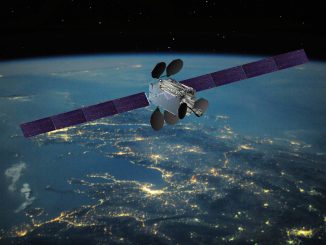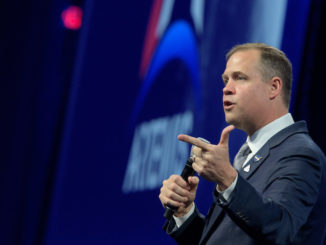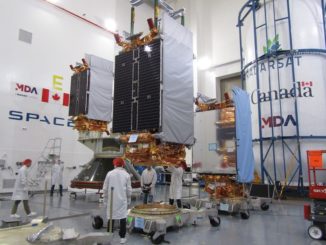
Boeing Co. and SpaceX, selected by NASA last month to carry astronauts to the International Space Station, can resume development of their human-rated spacecraft after officials ordered a work stoppage prompted by a protest by Sierra Nevada Corp., the company left out of the contracts, NASA said Thursday.
NASA directed Boeing and SpaceX to halt work under the new Commercial Crew Transportation Capability, or CCtCap, contracts after Sierra Nevada sought a review of the space agency’s contract decision by the U.S. Government Accountability Office.
Government agencies often hold up work under new contracts when protests are filed to the GAO.
In a posting on its website Thursday, NASA said it has decided to proceed with the Boeing and SpaceX contracts despite Sierra Nevada’s challenge.
“The agency recognizes that failure to provide the CCtCap transportation service as soon as possible poses risks to the International Space Station (ISS) crew, jeopardizes continued operation of the ISS, would delay meeting critical crew size requirements, and may result in the U.S. failing to perform the commitments it made in its international agreements,” NASA said in the Internet post.
The GAO has not weighed in on Sierra Nevada’s protest. The congressional watchdog agency has until Jan. 5 to issue a recommendation.
If the GAO rules in favor of Sierra Nevada, NASA could change its decision or re-compete the commercial crew contract. NASA is not explicitly required to follow GAO recommendations, but the watchdog reports to Congress when agencies do not comply with GAO rulings.
Sierra Nevada said there were “serious questions and inconsistencies in the source selection process” that prompted the contract protest. The company said its proposal was less costly to NASA than Boeing’s and was deemed “near equivalent” to Boeing and SpaceX’s bids in technical merit and past performance metrics.
But NASA’s announcement Thursday means Boeing and SpaceX are cleared to continue work under the CCtCap contracts, aiming to produce a certified spacecraft and launch vehicle for astronaut crews by the end of 2017.
“These considerations compelled NASA to use its statutory authority to avoid significant adverse consequences where contract performance remained suspended,” NASA said. “NASA has determined that it best serves the United States to continue performance of the CCtCap contracts that will enable safe and reliable travel to and from the ISS from the United States on American spacecraft and end the nation’s sole reliance on Russia for such transportation.”
The space agency announced Sept. 16 it chose Boeing and SpaceX to build, test and fly commercial crew spacecraft to end U.S. reliance on Russian Soyuz spaceships for transportation of astronauts to the space station by the end of 2017.
Sierra Nevada also bid for a contract, but NASA passed over the company’s Dream Chaser lifting body concept in favor of Boeing and SpaceX capsules designed to land under parachutes with the help of air bags and braking rockets.
Sierra Nevada said Sept. 26 it filed a protest with the GAO, seeking “a further detailed review and evaluation of the submitted proposals and capabilities,” the company said in a statement.
The Dream Chaser proposal, which would take off on top of a United Launch Alliance Atlas 5 rocket and land on a runway, would cost some $900 million less than Boeing’s CST-100 contract, Sierra Nevada said.
Boeing is set to receive up to $4.2 billion in its CCtCap contract. SpaceX’s deal is worth a maximum of $2.6 billion.
Both contracts cover development, test flights and up to six operational missions to ferry NASA and partner astronauts between Earth and the International Space Station. NASA guaranteed each company at least two fully-fledged for-profit flights.
Boeing’s CST-100 crew capsule — like Sierra Nevada’s Dream Chaser — is designed to take off aboard Atlas 5 rockets.
SpaceX is working on a highly-modified second-generation Dragon capsule fitted with myriad upgrades and changes — including new rocket thrusters, computers, a different outer mold line, and redesigned solar arrays — from the company’s Dragon cargo delivery vehicle already flying to the space station.



